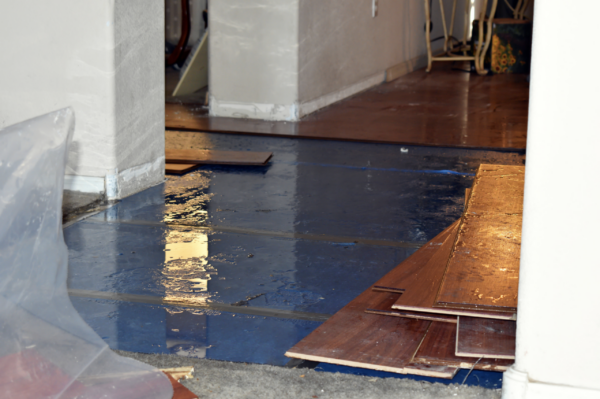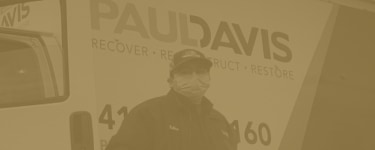Experiencing a kitchen fire can be both frightening and overwhelming. Knowing what to do after a kitchen fire is crucial to ensure your safety and begin the recovery process. This guide will walk you through the necessary actions to take after a small kitchen fire to help you restore your home and peace of mind.
Understanding Kitchen Fires
Kitchen fire damage can be extensive, causing significant harm to your home and posing serious safety threats. Understanding the common causes, prevention methods, and recognizing the signs of a kitchen fire can help you stay prepared.
Common Causes of Kitchen Fires:
- Unattended Cooking: Leaving the stove or oven unattended is a leading cause of kitchen fires. Even a brief distraction can result in a fire.
- Grease and Oil: Overheated grease and oil can easily ignite. Never leave hot oil or grease unattended on the stove.
- Electrical Malfunctions: Faulty appliances or wiring can spark a fire. Regularly check your appliances for any signs of damage.
Kitchen Fire Prevention Measures:
- Never leave cooking food unattended. If you need to step away, turn off the stove or oven.
- Keep flammable items, such as kitchen towels and curtains, away from open flames or heat sources.
- Regularly clean your oven, stove, and exhaust hood to prevent grease buildup.
- Ensure your kitchen is equipped with a functional fire extinguisher and smoke detectors.
Immediate Actions to Take after the Fire
When faced with a kitchen fire, quick action is crucial to ensure everyone’s safety. Here are the essential steps to follow:
- Ensuring Everyone’s Safety: Evacuate all occupants from the premises. Alert everyone in the house about the fire and ensure they leave the area immediately. Account for all family members, including children and pets. Never prioritize saving belongings over human lives.
- Calling Emergency Services: Once everyone is safe, dial 911 to report the fire. Provide accurate information about the situation, your address, and any other necessary details. Remain calm and answer their questions to the best of your ability.
- Using Fire Extinguishers Properly: If the fire is small and manageable, you may attempt to extinguish it using a fire extinguisher. Only use a fire extinguisher if you have been trained and if it is safe to approach the fire. Remember the acronym PASS: Pull the pin, Aim at the base of the fire, Squeeze the handle, and Sweep the extinguisher from side to side.
By following these immediate actions, you can help minimize the damage caused by a kitchen fire and ensure the safety of everyone involved. Prioritize your safety by evacuating your home immediately and calling emergency services.
If the fire is small and manageable, use a fire extinguisher following proper instructions. Never attempt to fight a large or spreading fire alone; consult professionals for fire damage restoration and address any structural concerns after the fire has been extinguished.
Assessing the Damage
After a kitchen fire, it is crucial to assess the damage properly to ensure a successful restoration process. Here are the key areas to focus on when assessing the damage:
- Checking for Structural Damage: Inspect the kitchen for any structural damage caused by the fire. Look for signs of weakened walls, ceilings, or floors. If you notice any cracks, sagging, or other visible damage, consult with a professional contractor to evaluate the extent of the structural issues.
- Evaluating Smoke and Soot Damage: Smoke and soot can cause extensive damage to your kitchen and its contents. Inspect the walls, cabinets, appliances, and other surfaces for soot deposits, discoloration, or a strong smoke odor. Document the extent of the damage and consult with a fire restoration specialist for appropriate cleaning and restoration solutions.
- Assessing Water Damage from Firefighting Efforts: Water damage can be a significant concern after a kitchen fire due to firefighting efforts. Check for water accumulation, dampness, and potential mold growth. Address water damage promptly to prevent further issues, such as structural damage or mold growth.
Accurate damage assessment is vital for determining the appropriate restoration steps and ensuring a safe and thorough recovery process. If you need professional assistance, contact Paul Davis Greater Richmond. Our experienced team has guided thousands through this process, providing expert guidance and restoration services tailored to your specific needs. We understand how challenging these times can be, and we’re here to help you get back to normal as quickly and safely as possible.
Cleaning Up After a Kitchen Fire
Once the fire is extinguished and everyone is safe, it’s important to focus on the cleanup process. Here are some essential steps to take after a kitchen fire:
- Removing Debris and Damaged Items: Carefully remove any debris and damaged items from the kitchen. Use caution and wear protective gloves to avoid injury. Dispose of the items properly, following local regulations for hazardous waste if necessary.
- Dealing with Smoke Odor: Smoke odor can linger long after a fire. Open windows and doors to ventilate the area, allowing fresh air to circulate. Use fans or air purifiers to help eliminate the smell. Cleaning surfaces, including walls, ceilings, and floors, with a mixture of vinegar and water can also help combat the odor.
- Cleaning Surfaces and Appliances: After a kitchen fire, surfaces and appliances may be covered in soot and residue. Use a dry sponge or cloth to gently remove loose soot from walls and appliances. For stubborn residue, a mild detergent mixed with warm water can be used. Follow the manufacturer’s instructions for cleaning appliances to prevent any damage.
While these steps can help you start the cleanup process, it’s crucial to contact professionals like Paul Davis for a thorough and safe restoration. Professionals are trained to identify hidden issues that may not be immediately apparent, such as structural damage, lingering smoke odors, and potential mold growth from water used to extinguish the fire. Our experienced team specializes in fire damage restoration and can assist you in safely restoring your kitchen to its pre-fire condition, ensuring all hidden dangers are addressed as well as the visible ones.
Restoring Your Kitchen
After a kitchen fire, it is essential to take immediate action to restore your kitchen and ensure its safety. Here are some important steps to consider:
- Repairing or Replacing Damaged Cabinets and Countertops: Fire can cause significant damage to your kitchen cabinets and countertops. Depending on the extent of the damage, you may need to repair or replace them. Professional restoration experts can assess the situation and advise you on the best course of action to restore your kitchen to its pre-fire condition.
- Addressing Electrical and Plumbing Issues: Kitchen fires can lead to electrical and plumbing problems. Have a qualified electrician and plumber inspect your kitchen to identify any issues caused by the fire. They can repair or replace damaged wiring, outlets, pipes, or fixtures to ensure the safety and functionality of your kitchen.
- Upgrading Kitchen Safety Measures: After a kitchen fire, it is essential to enhance the safety measures in your kitchen to prevent future incidents. Consider installing smoke detectors, fire extinguishers, and a fire suppression system. Ensure your kitchen is equipped with proper ventilation to minimize the risk of fire.
At Paul Davis Restoration of Greater Richmond, we understand the stress and challenges that come with a kitchen fire. Our team of experts is here to support you throughout the restoration process. We specialize in repairing kitchen fire damage and restoring your kitchen to its former glory.
Working with Fire Damage Restoration Professionals
After a kitchen fire, working with reputable fire damage restoration professionals is essential for a smooth recovery process. Here are some important considerations when seeking assistance:
- Finding Reputable Fire Damage Restoration Companies: Research local fire damage restoration companies in the Greater Richmond area. Look for companies with experience, positive customer reviews, and certifications from reputable organizations like the Institute of Inspection, Cleaning and Restoration Certification (IICRC). Ask for referrals from friends, family, or insurance agents who have had previous experiences with fire damage restoration.
- Understanding the Restoration Process: A reliable fire damage restoration company will assess the extent of the damage and develop a comprehensive plan for restoring your kitchen. They will clean up soot, remove debris, repair structural damage, and eliminate lingering smoke odors. They may also salvage and restore salvageable items to their pre-fire condition. Understanding the entire restoration process is important to know what to expect.
- Navigating Insurance Claims: Dealing with insurance companies can be overwhelming, but fire damage restoration professionals can help simplify the process. They can document the damage, prepare necessary paperwork, and communicate with your insurance company on your behalf. Keep detailed records of the damage, including photographs and receipts for any expenses related to the fire. This will aid in the insurance claim process and ensure you receive the compensation you deserve.
By trusting the certified experts at Paul Davis Restoration of Greater Richmond, you can rest assured that you are receiving cutting-edge service. Our employees are contributing members to the standards writing body for the IICRC, collaborating with the greatest restoration minds across the world. This ensures that your kitchen will be restored to its pre-fire condition efficiently and effectively. Contact us at Paul Davis Restoration of Greater Richmond if you need expert assistance in handling kitchen fire damage restoration.






